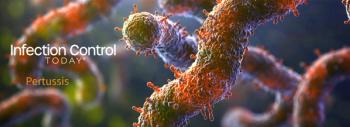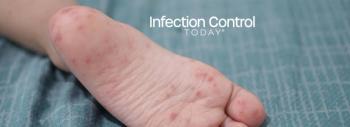
IC Today Hot Topics: COVID-19 Readiness, Meningococcal Outbreak, and Norovirus
In this Hot Topics in IPC, Saskia v. Popescu, PhD, MPH, MA, CIC, FAPIC, discusses whether masks need to return for COVID-19, Virginia’s outbreak, and interesting articles to read.
COVID-19 Readiness
Are we ready for COVID this fall? This question has increasingly been coming up, and the truth is, I can’t in confidence say “yes”. Katherine Wu, PhD, and a staff writer for The Atlantic, recently drew attention to this regarding masking mandates and hospital efforts, thus highlighting the challenges hospital infection preventionists (IPs) and epidemiologists face when it comes to mask mandates in the fourth year of the COVID-19 pandemic. “
Realistically, we’re likely to
Also, good news: BA.2.86, a new COVID variant, is likely
Virginia is Fighting a Meningococcal Outbreak
“The VDH urged parents and healthcare providers to ensure that children receive all recommended vaccines, including MenACWY, which is recommended for adolescents before entering 7th grade, with a booster dose before 12th grade. The vaccine is also recommended for people who are at increased risk from the disease.”
Interesting Things to Read:
CDC MMWR on Norovirus Outbreak via Oysters –Not particularly surprising, but nonetheless interesting to read. “On December 7, 2022, the Texas Department of State Health Services (DSHS) Public Health Region 6/5 South (PHR 6/5S) and DSHS Consumer Protection Division were notified by Galveston County Health District of 10 consumer complaints of illness after consumption of raw (9 complaints) and smoked (1) oysters at local restaurants during November 27 [to] December 4. Signs and symptoms began within 8 hours after consumption and included diarrhea, nausea, or vomiting. Initially, no consumers sought medical care. Oyster tags from 3 associated restaurant inspections determined that oysters were from Oyster Harvest Area TX 1 (TX 1) in Galveston Bay, Texas.”Long-term COVID and Health Problems —A large study of veterans is sharing insight into the impact of COVID-19 infections on long-term health, noting that they “found a dramatically increased risk of dozens of conditions including heart failure and fatigue, sometimes years postinfection. Overall, the team estimates, COVID-19’s public health impact is more than 50% greater than that of cancer or heart disease.”
Newsletter
Stay prepared and protected with Infection Control Today's newsletter, delivering essential updates, best practices, and expert insights for infection preventionists.





